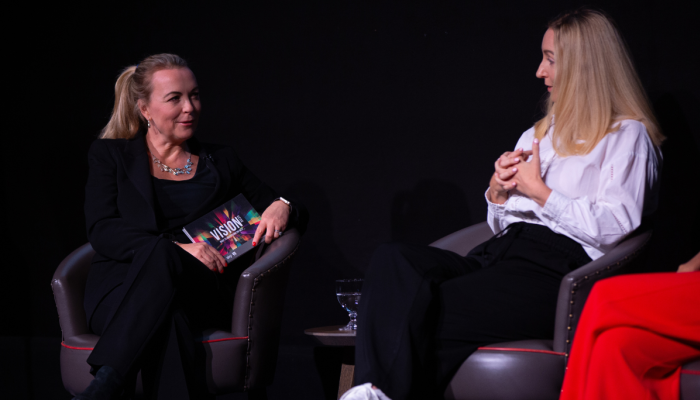‘Friendfluence’ is marketing that leverages authentic peer connections rather than aspirational influencer relationships. It’s peer-led, community-driven, and designed to feel like it’s coming from a trusted friend, not a brand playbook. This deep dive explores how peer-led marketing is redefining influence with Gen Z, and why brands that embrace ‘Friendfluence’ can build trust, capture attention, and prove measurable value.
In a world where 69% of marketers say winning attention is their biggest challenge, and 64% cite brand trust as a constant concern,* Gen Z’s shifting loyalty poses both a problem and an opportunity. This redefinition of influence shows why peer-led marketing isn’t just a trend; it’s a necessary response to the attention crisis marketers face today.
Background
Influence is being redefined. Once, people followed aspirational influencers and celebrities - the bigger and more unattainable, the better. Today, that distance can be a turn-off, as many are seen as “out of touch.” Influence now favous authenticity, with content shifting from polished perfection to raw, real moments.
Whether through brand ambassadors, nano-influencers, or student reps, ‘Friendfluence’ leverages real connections and authentic voices to help brands stand out. Young consumers trust those who share their language, generation, and worldview. Community amplifies this effect, as these creators engage directly with followers, creating belonging that macro-influencers can’t match.
Winning Attention
Trust and community matter but only if you first capture attention. With Gen Z’s famously short attention spans and 23+ million videos posted to TikTok daily, standing out means breaking through constant content. Yet only 28% of marketers are active there, while over half of users engage with brand content daily, leaving a big opportunity for those willing to lean in.**
Brands winning attention let young creators speak in their own voice, embrace lo-fi styles, and skip rigid scripts building engagement and genuine communities. Nano-influencers, for example, see 4x the engagement of macro-influencers.*** Peer-led content works because it blends seamlessly into feeds, feels authentic, and earns trust - the currency that drives both attention and results.
Proving Value
Attention and trust are valuable, but marketers need proof that peer-led strategies deliver results. Our work with Deliveroo at Raptor Marketing shows exactly that. To re-engage students and stand out in a competitive market, we launched Deliveroo Students, powered by a network of student brand ambassadors. With creative freedom and authentic voices, they brought 'Friendfluence' to life, building credibility through peer-to-peer content and campus activations.
The outcome:
- 400,000+ student sign-ups
- 70% repeat orders
- Deliveroo climbing to #1 for on-campus presence
- #3 student brand of 2024.
Proof that authenticity drives both engagement and growth.
Futureproofing
Futureproofing a strategy for a generation whose trends change weekly is no easy feat. Peer-led marketing, however, gives brands the ability to keep pace through built-in adaptability. When your representatives are your audience, they instinctively adjust style, language, and channels in real time, no strategy refresh required. By building your strategy around the people, not the platform, brands can ensure their voice stays relevant, authentic, and part of the conversation. In this way, ‘Friendfluence’ becomes the ultimate futureproofing tool.
Looking Forward
Peer-led marketing will become more strategic and measurable
Platform evolution
TikTok may dominate now, but expect to see brands infiltrating spaces like Twitch, Reddit, and private Discord servers, places where peer conversations already thrive and feel organic.
Sharper attribution
As AI-powered analytics advance, brands will be able to connect peer-led campaigns directly to conversion and LTV, making them easier to justify at board level.
Regulatory shifts
As peer-led content continues to blur the line between friend recommendations and advertising, expect clearer disclosure standards to emerge. Brands that embrace transparency early will build stronger, longer-term trust with their audience.
Final Thoughts
‘Friendfluence’ marketing tackles three of the industry’s biggest challenges in one hit. It builds trust through relatable, authentic messengers who understand their audience’s world. It captures attention with feed-native content that feels natural, thumb-stopping, and genuinely enjoyable. Finally, it delivers value, generating measurable impact that proves its worth to stakeholders.
The playbook is simple but not easy
Recruit the right peers:
Nano-influencers, student reps, and creators who genuinely reflect your audience.
Empower, don’t script
Give them freedom to create in their own voice and style.
Measure what matters
Retention, repeat purchase, and community growth, not vanity metrics.
‘Friendfluence’ will only grow stronger. Influencer popularity rises and falls, but the power of peer recommendation stays constant. Trust in your inner circle is more valuable than ever. The brands that win are the ones that stop chasing virality and start building trusted peer networks that can flex, evolve, and lead the conversation.
Sources:
* - The Marketing Society Member Pulse Survey
** - Sprout Social’s 2024 Social Media Content Strategy Report.
***- - Sprout Social’s 2024 Social Media Content Strategy Report.



